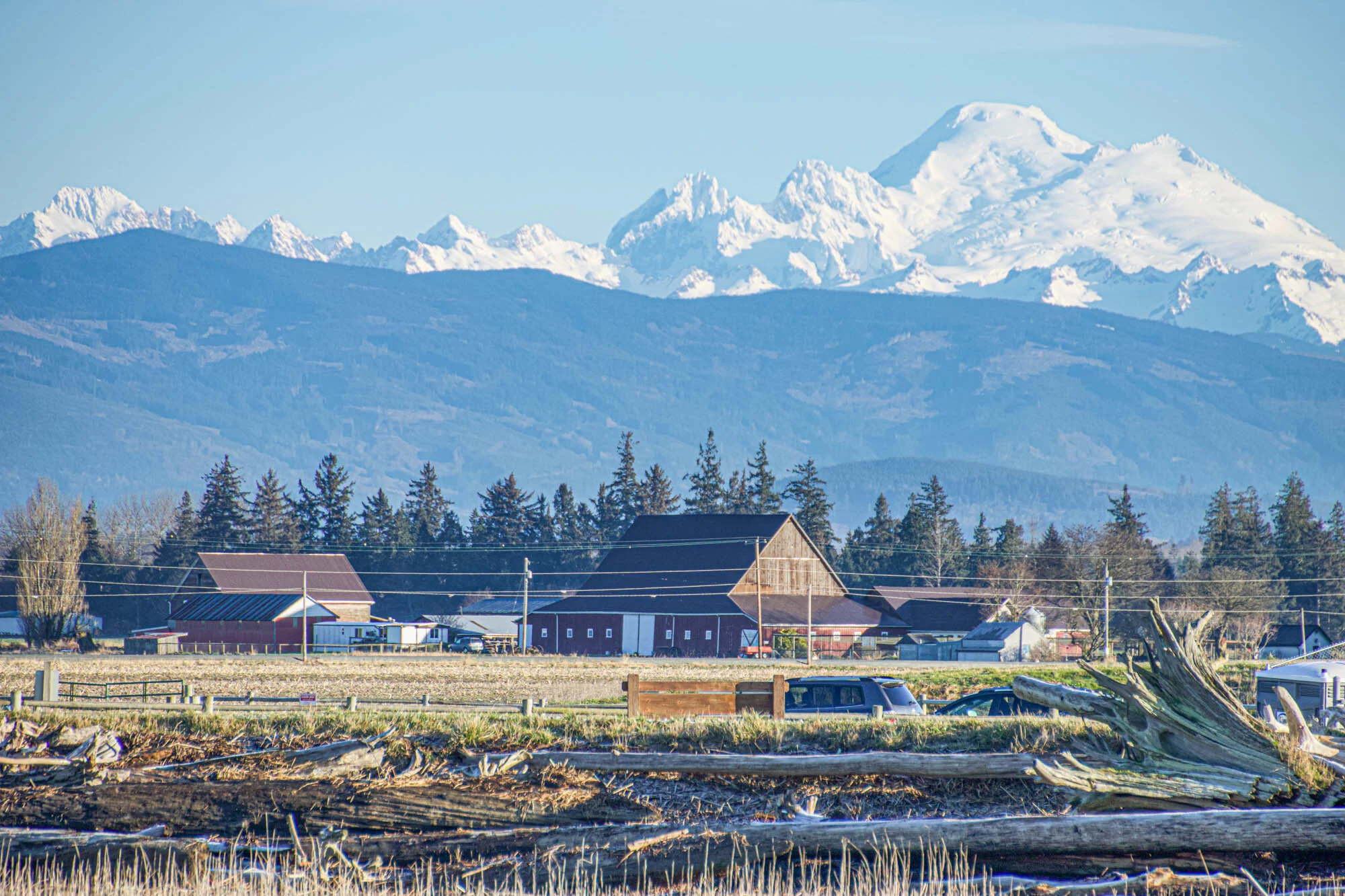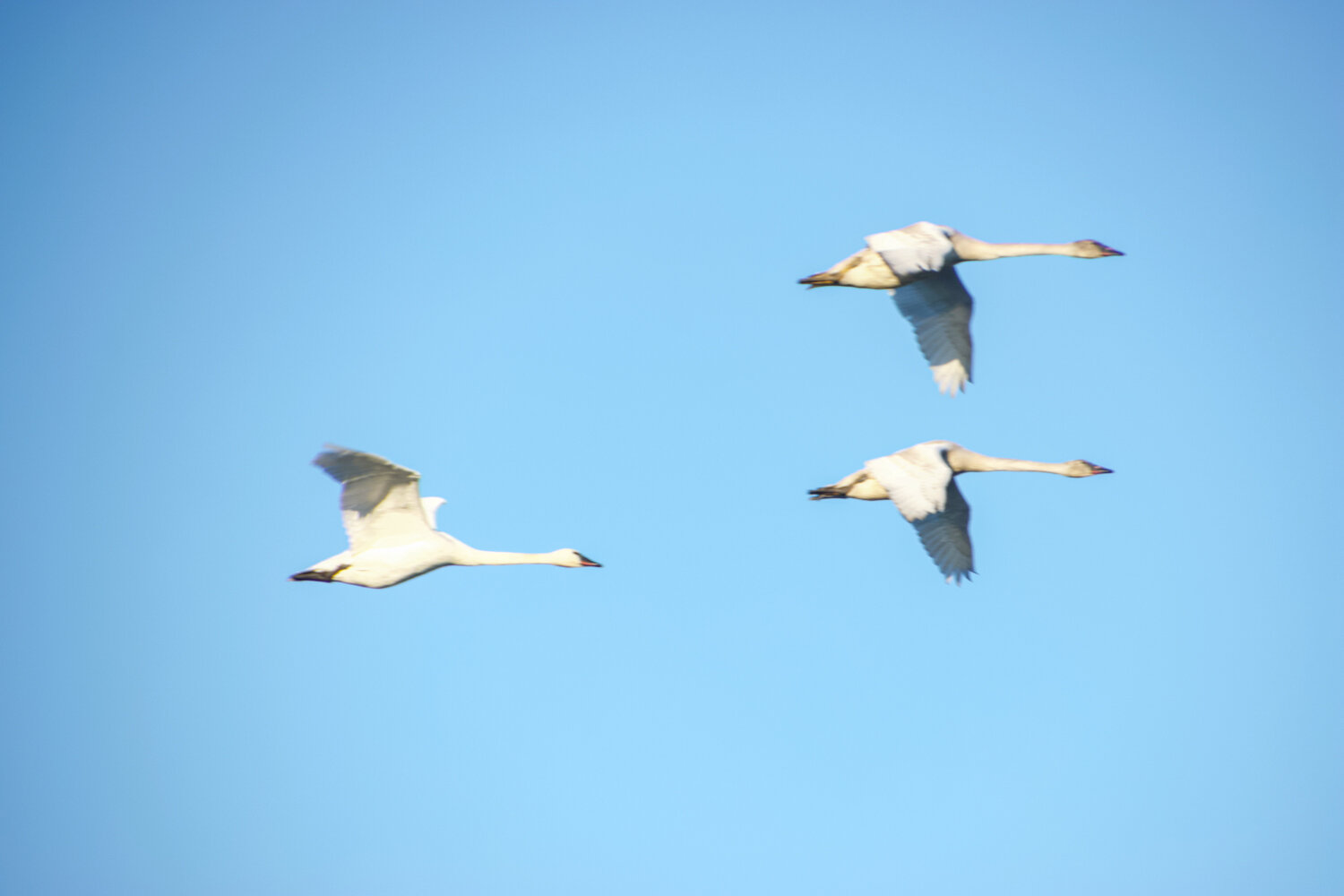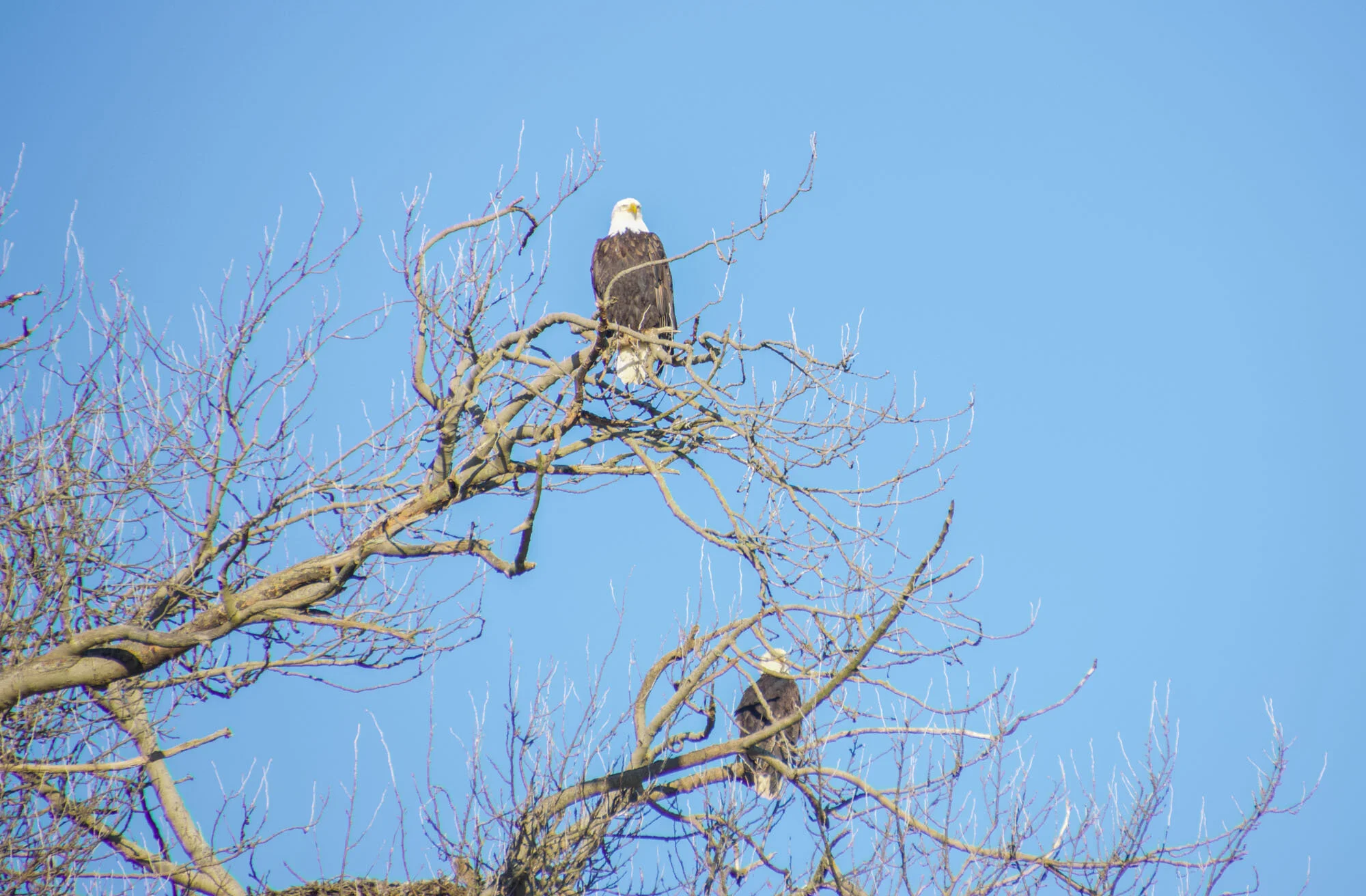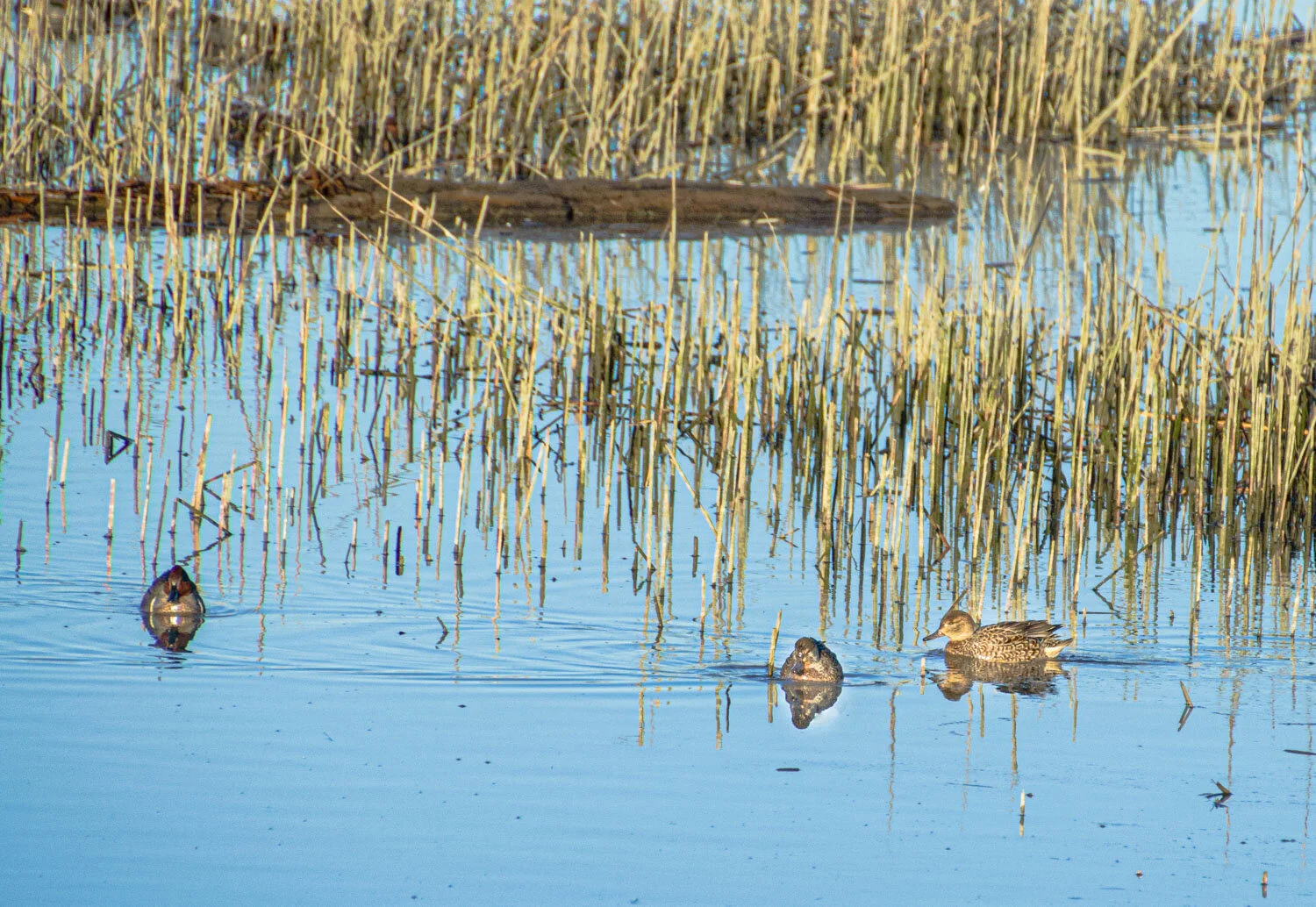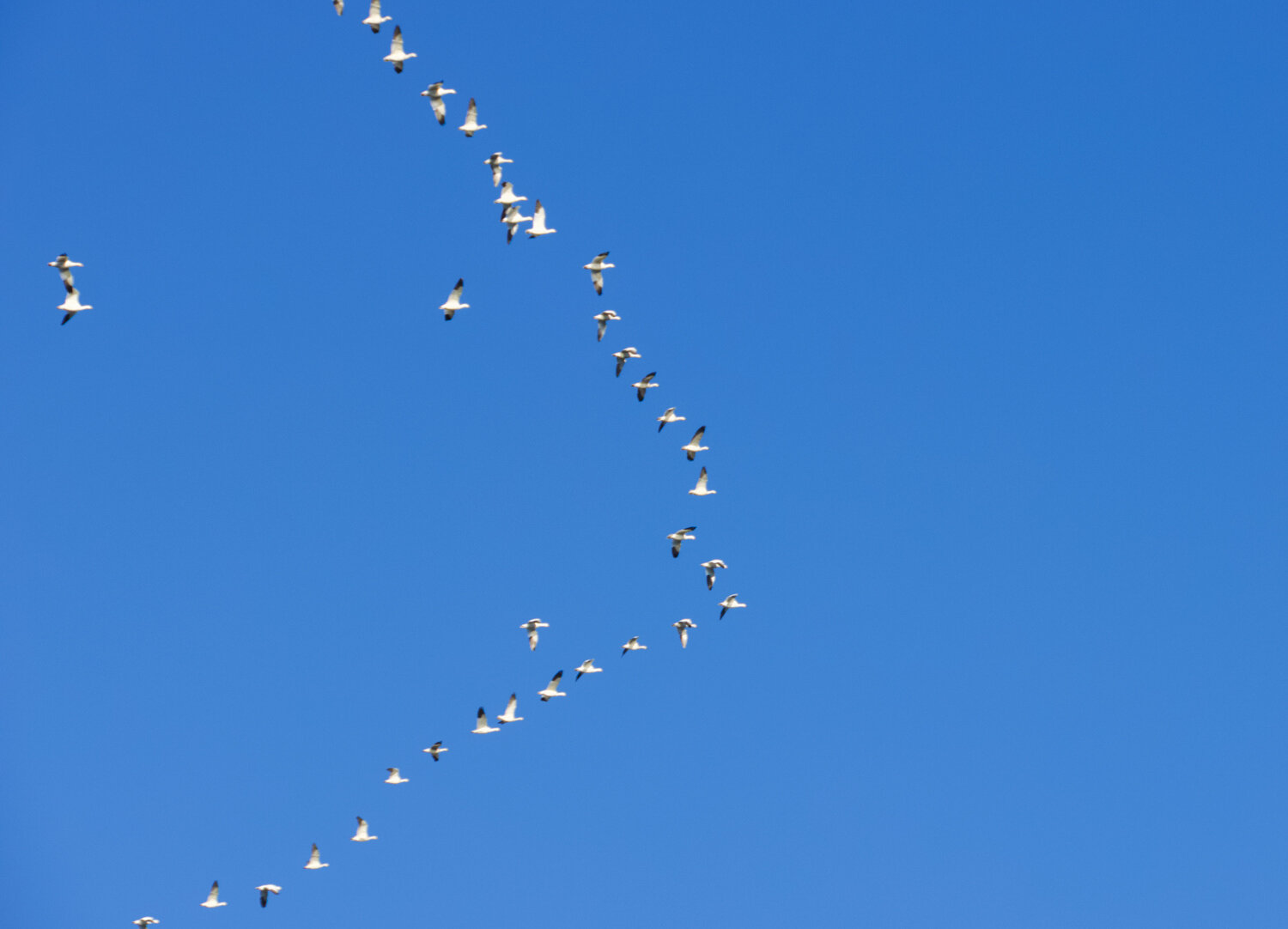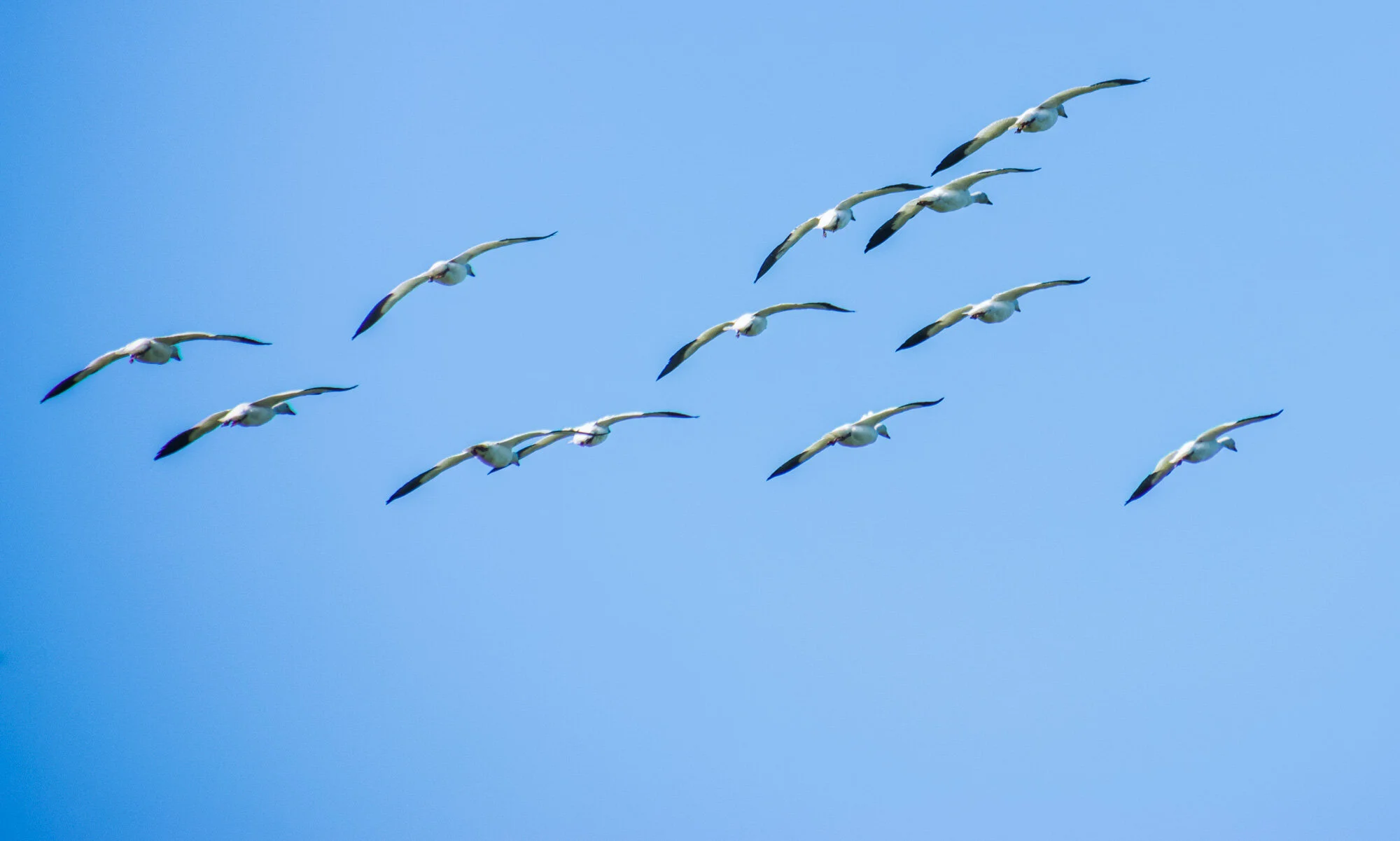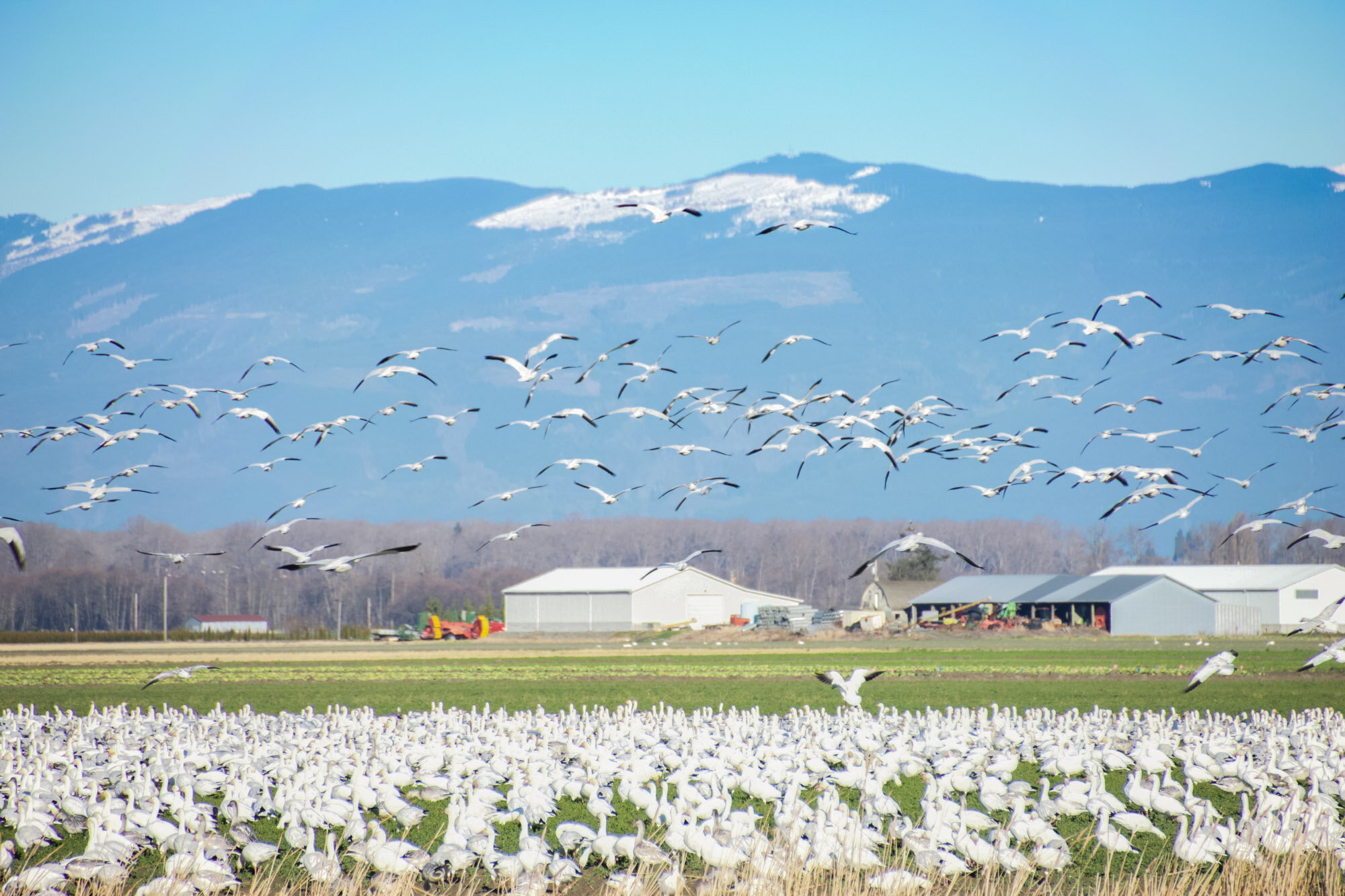Snow Geese and Trumpeter Swans Come to Skagit Valley
I left my house at 6:00 am to reach my destination in time to watch the sun rise. I was tempted to stop many times along the way and photograph the eerie silhouettes of the mountains around me, but I stayed the course.
I arrived just after 7:00 a.m and the sun was just rising behind the Cascades, lighting up the land in magnificent oranges and reds. Mount Baker was sparkling white, framing a farm that sat in front of it. As I set up my equipment carefully, thinking through all of the settings I wanted to use, I looked around and was mesmerized by the beauty and peacefulness that surrounded me. My breathing slowed, and as I took it all in I knew I was in the right place, doing exactly what I was meant to be doing at that moment.
Sunrise over Mount Baker
Mount Baker behind Farm Land
My intention was to see the snow geese and trumpeter swans that fly down to the Skagit Valley from the Arctic between late October and March each year to warm up over the winter. This must be their Palm Springs or Miami Beach. They are the real “snowbirds”. I hadn’t planned on starting this journey until I was farther along in my planning, but the snow geese and trumpeter swans have their own calendar and if I was to photograph them this year I had to be on their schedule.
Snow geese have orange beaks, and the black on their wings only shows on the under side.
Trumpeter swans have black on their faces and tails, and they have much longer necks than the snow geese.
The Skagit Wildlife Area contains 16,708 acres that flaunt marshes, open water, tidal mudflats and agricultural flat lands planted with cereal grains to feed the birds that winter-over in this area. The two main sections of the Skagit Wildlife Area, Wylie Slough and Fir Island Reserve, are among the best known places to find the birds.
On the way from my car, I saw two eagles sitting contently in trees along the edge of the parking lot. The ducks in the marshes behind me and the trumpeter swans in front were waking up. The only sounds I heard were them having serious honking conversations with each other. Some swans took off in small groups of two or three, and others in flocks of dozens, flying together in perfect form and synchrony.
I spent several hours between both locations then decided to drive around on some smaller roads to see what else I would find. In a very short time and just around the curve on Fir Island Road toward LaConner, I suddenly saw sprawling fields carpeted in white. Flocks of snow geese. Thousands of them, with their heads down munching on the grains that had likely been planted for them by area farmers. From a distance it was hard to distinguish one goose from another because there were so many of them. I pulled over to the side of the road, joining other cars whose passengers had the same idea. Every few minutes, flocks lifted into the air together, in perfect harmony. An amazing sight.
This day was a wonderful way to start Project 70. Please join me as I continue to explore and photograph Western Washington, finding the many gems in this beautiful part of our country.



